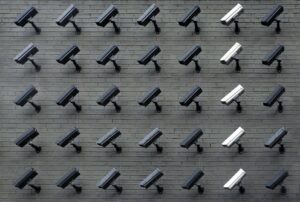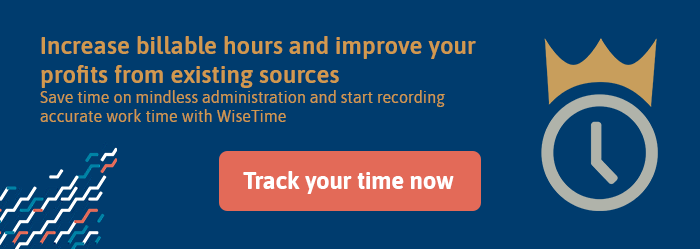Why workplace employee surveillance can damage your company culture
Employee monitoring software has made its way into many company’s day-to-day routine. But this is damaging your company culture at this very moment and there are other solutions.

The switch from office to remote work has given employers the opportunity to get into employees’ daily lives in an attempt to monitor their activity at work and ensure performance standards are up to par with expectations.
The future uncertainty and constant back-and-forth between the office, home, and a hybrid setting are determining all kinds of businesses to keep a close eye on what their workers are doing. There’s no shortage of use cases for these workplace employee surveillance solutions as law firms have also jumped on board.
Widespread concerns started in late 2020 when Microsoft introduced the ability for managers to see every individual’s activity through the Microsoft 365 suite. The issue extends to all of the tools in your regular stack, from email communication to project management and even time tracking.
We’re going over the factors that play into how you can protect the privacy and personal rights of your team when using time tracking tools.

The ethics vs. productivity debate behind employee surveillance
There are many tools out there that offer similar productivity insights as bossware solutions without interfering with employees’ personal lives or privacy.
Conflicts between workers and companies regarding productivity, transparency, and work performance within a given timespan are common side effects of using such solutions. The addition of extra surveillance tools only fuels this debate as the gap between the employer’s power and the employee’s rights widens.
Ironically, as companies are trying to protect their company’s data they’re intruding into the personal lives of their workers. Without knowing exactly what these bossware apps do, organizations believe that their productivity reports can increase revenue and performance. In reality, they’re only making their employees uncomfortable working with them. This is because they believe their information is being stolen or they’re not trusted by their employers.
New regulations that aim to keep data secure like HIPAA or FISMA have prompted companies to introduce new tools as a way of complying with these new security standards. Now they’re recording employee data like email messages or phone conversations as a backup in case of a breach or client security inquiry.
Most employee surveillance methods are legal. So far, few privacy laws apply in the U.S., clearly citing what employers aren’t allowed to track. In Georgia, for instance, companies can only track biometrics data “for human security and property protection purposes, also to prevent disclosure of secret information if these goals may not be reached by other means or require disproportionately great efforts.” But most U.S. states and other countries have limited employee privacy measures as the majority of these laws are still placed under a legal grey area.
In Europe, the GDPR data protection law helps employees to a certain extent by requiring a person’s approval and notifying what type of data is tracked and how it’s used. However, certain GDPR obligations don’t apply to companies with fewer than 250 employees and the general regulations are far from perfect.
This leaves behind the ethical side of using employee surveillance at work, bringing up serious implications on your employer branding and team culture efforts.
When bossware trackers can damage your work culture
In the office, security cameras and biometrics solutions for facial recognition and fingerprint identification were already quite common. Same goes for the controversial social media monitoring and background check tools that are testing the ethics of trackers.
Along with distributed work, companies got more access to the personal lives of their employees through screen capture and location tracking through GPS. The very audit log of virtually every tool you’re using gives even more details into when and how a person works.
This type of behavior from the employer’s side is keeping people away from companies that impose strict surveillance. Two out of three people are hesitant to join such organizations, particularly when the tracking efforts extend over to facial recognition and physical health monitoring.
On the other end, companies stand strong. They motivate the use of employee monitoring tools as a means of helping team members collaborate better, work safely, and be productive. In reality, the role of these systems extends with companies firing people for reasons like violating company policies or a breach of confidentiality.

Why privacy is a must when evaluating timekeepers
Among all workplace surveillance solutions, time tracking tools are commonly used to monitor multiple aspects, from a person’s browser activity to where they’re recording time from.
Many timekeepers boast their browser screenshot feature as a way of reassuring managers that team members aren’t slacking, browsing websites they’re not allowed, or staying away from the computer for too long. Some solutions go as far as taking webcam screenshots to check if the employee is at their desk and where they’re working from.
These screenshots are intrusive as they force employees to spend every minute on a work-related activity. When switching to personal messaging or email, these screenshots reveal sensitive data that can be used against them. Many employees are on their personal devices at work. Installing such software within a private environment ignites their fear of being spied on outside of work hours.
So how do you monitor employees while respecting their privacy?
To ensure your team feels safe, go over these best practices when opting for new solutions or practices for tracking employee activity at work:
- Have a discussion internally regarding the importance of surveillance to ensure you’ll get the results you need and keep employees on the same page
- When introducing new tracking tools, define what will and won’t be tracked and get approval for every point
- Send anonymous surveys to your employees so you can get their honest thoughts on tracking
- Give employees full control over their data so they can delete or change it if appropriate
- Only use employee data for legitimate, internal purposes like improving your work process or preventing a contract violation
- Employ extra security features on your databases and apps so there’s no chance of their information leaking out
- Avoid using data as a way of threatening employees by minimizing the information you collect so you’re not breaching their confidential information
- Record anonymized data that won’t disclose a person’s information but can still be used to improve your business and operational practice
Know that there are timekeeping apps out there that help you manage all of the above and use data for the individual’s good. We created WiseTime with user privacy in mind so people can focus on improving their performance and gaining better control of their time.
This said, time captured in WiseTime is only visible to the individual until they decide which time they want to post. The settings allow team members to edit the time recordings before they send a report so they can separate their leisure activities from work duties. The reports generated through WiseTime only shows team activity that has been posted.
To help distinguish between your privacy activities and your work, individuals can specify app name and window titles keywords you want excluded from your time logs.
WiseTime comes with strong data lifecycle management options so every person can control how long we store your timeline data. Keep in mind this is a must-have feature when selecting your next time tracking tool or any other software that monitors employee activity.
Studies show how the majority of workers agree that monitoring leads to workplace discrimination and damages trust. These are just two of the core risks you’re accepting when implementing work surveillance solutions your employees don’t agree with. You can always work together with your team to find a common ground for gathering mandatory data while respecting their privacy.
The purpose isn’t to monitor employees but to provide the best solutions to increase both revenue and work satisfaction. Lawyers using AI time tracking tools to increase billing and utilization rather than surveillance have seen far better results on their balance sheets.
